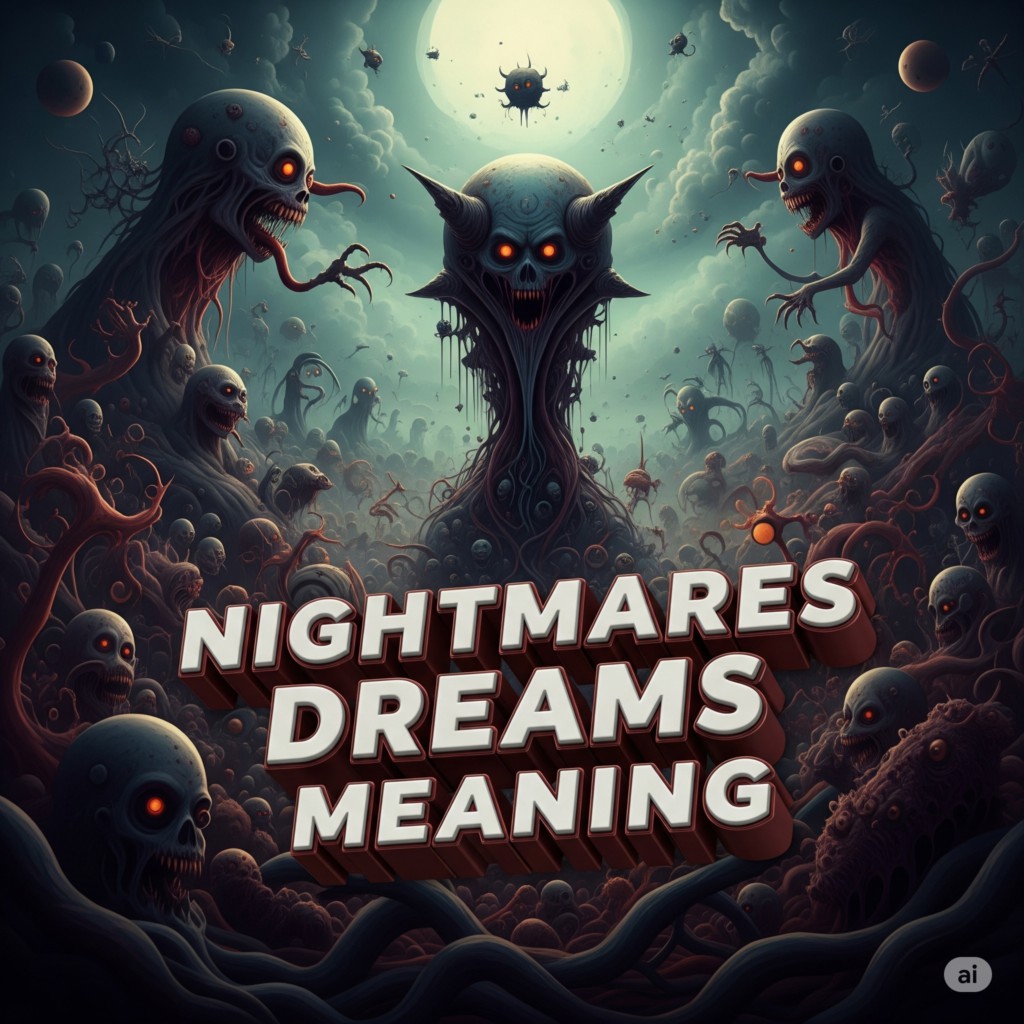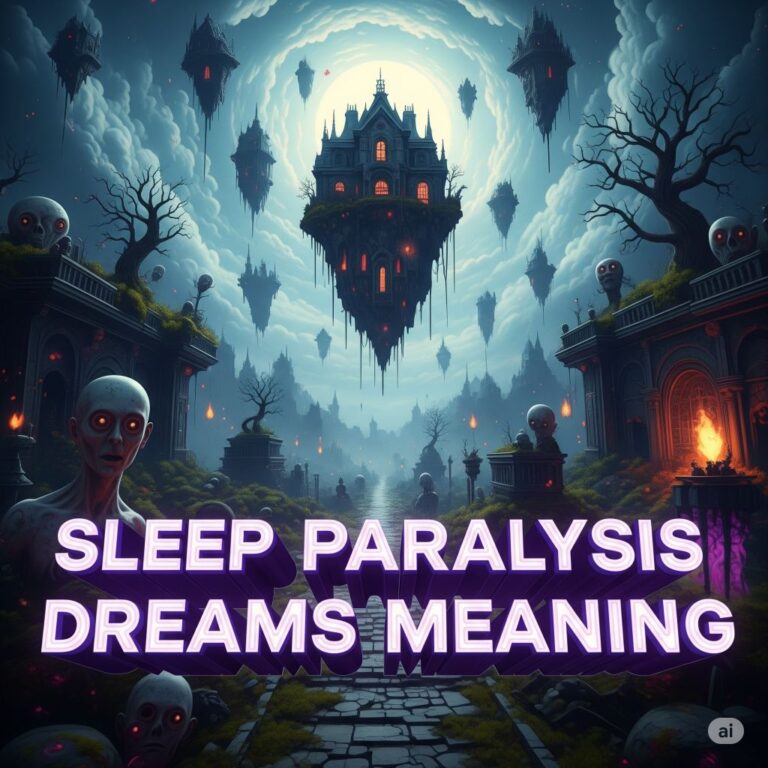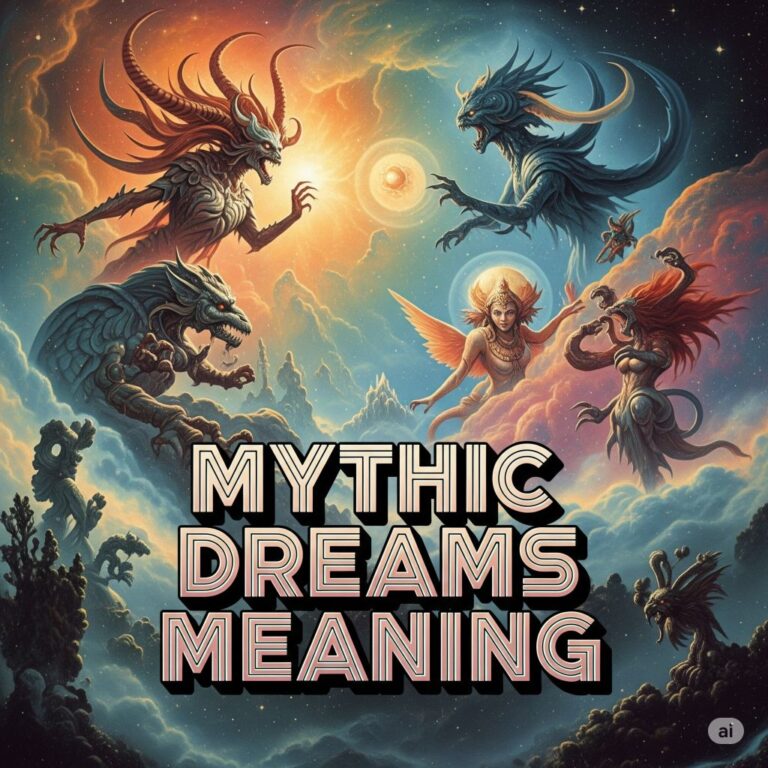
Nightmares are distressing, vivid dreams that evoke strong feelings of fear, anxiety, or terror. They typically occur during REM (Rapid Eye Movement) sleep, the stage of sleep most associated with vivid dreaming. Nightmares can lead to awakening with feelings of panic or dread, often causing the dreamer to have difficulty returning to sleep. Although nightmares are common and can happen to anyone, they may have particular significance related to the dreamer’s emotional and psychological state.
This article explores the meanings and interpretations of nightmares, their psychological and physiological causes, cultural and religious perspectives, common themes, and effective coping strategies for those who experience them.
What Are Nightmares?
Nightmares are defined as unpleasant dreams that cause significant distress and can lead to awakening from sleep. Common features include:
- Intense Fear or Anxiety: The dream often involves threats to the dreamer’s safety or well-being.
- Vivid Imagery: Nightmares are usually highly detailed and immersive, making them feel exceptionally real.
- Disruption of Sleep: They can lead to difficulty returning to sleep and may cause lingering feelings of fear or anxiety.
- Cyclicality: Some individuals experience recurring nightmares that reflect ongoing emotional or psychological struggles.
Psychological Interpretations
1. Emotional Processing
Nightmares often reflect unresolved emotions, fears, or trauma. They can serve as a vehicle for the subconscious mind to process difficult feelings.
- Coping Mechanism: Nightmares can be an unintentional way for the brain to rehearse facing fears, grappling with anxiety, or reflecting stressors from waking life.
- Release of Repressed Thoughts: Nightmares may bring repressed materials to the surface, allowing the individual to confront uncomfortable situations.
2. Manifestation of Stress or Anxiety
- Life Stressors: Situations such as workplace pressures, relationship issues, or significant life changes can lead to increased nightmares. Stress often heightens emotional states that appear in dreams.
- Ongoing Trauma: Survivors of trauma or abuse may be particularly susceptible to nightmares as the mind attempts to process the trauma.
3. Exploration of the Shadow
According to Carl Jung’s theory, nightmares may represent encounters with the “shadow”—the darker aspects of the psyche that individuals often suppress.
- Confrontation with Fear: These dreams may signal the need to face and integrate repressed parts of oneself or acknowledge inner conflicts.
4. Symbolic Representation
Nightmares often feature symbols or images that reflect deeper psychological concerns:
- Common Nightmarish Symbols: Darkness, being chased, falling, losing control, and faces resembling known figures (with distortions)—each may correlate with specific waking fears or unresolved issues.
Table 1: Common Nightmarish Themes and Their Meanings
| Nightmarish Theme | Potential Interpretation |
|---|---|
| Being chased | Avoidance of confrontation or unresolved fears |
| Falling | Feelings of inadequacy or fear of losing control |
| Death | Fear of failure, change, or grappling with loss |
| Natural Disasters | Overwhelming stressors or feelings of lack of control |
| Monsters or Threats | Facing deep-seated fears or anxieties |
| Loss of Voice | Feeling powerless or unheard in waking life |
| Nudity | Shame, vulnerability, or fear of exposure |
Physiological Causes of Nightmares
Nightmares can also have physiological triggers, which may include:
1. Sleep Disorders
- Nightmare Disorder: A condition characterized by frequent nightmares that disrupt sleep.
- REM Sleep Behavior Disorder: Individuals act out dreams—occasionally leading to physical injury during nightmares.
- Sleep Apnea: Interrupted breathing can lead to fragmented sleep and increased nightmares.
2. Substance Use
- Certain substances, such as alcohol, recreational drugs, or withdrawal from stimulants, may increase the frequency or intensity of nightmares.
3. Sleep Deprivation
Lack of sleep can heighten the intensity of dreams, leading to more frequent nightmares or heightened emotional content.
Common Themes and Characteristics
Nightmares frequently tap into common cultural themes and anxieties:
1. Personal Fear
Nightmares often reflect personal fears or unresolved concerns, sometimes bringing to light issues that have yet to be addressed in waking life.
2. Existential and Archetypal Themes
Many nightmares incorporate existential fears like death, loss of control, or abandonment—representing universal human anxieties.
3. Societal Reflectiveness
In challenging societal times (war, pandemics), nightmares may reflect collective fears common in the culture, manifesting themes of societal collapse, chaos, and despair.
Cultural Perspectives on Nightmares
1. Historical Accounts
- Ancient Greeks: considered nightmares as visits from demons or divinities that brought messages about stress or danger.
- Indigenous Cultures: Often use nightmares as opportunities for healing through rituals or shared storytelling, inviting communal support.
2. Cultural Shapes and Experiences
Different cultures manifest unique themes in nightmares influenced by local myths, fears, and socio-economic conditions.
- East Asian Traditions: Often feature supernatural elements, like ghostly presences.
- African Folklore: Engage in storytelling around dreams, where nightmares signal threats or spiritual warnings.
- Modern Psychological Approaches: View nightmares as reflections of personal or societal issues, encouraging therapeutic exploration.
Table 2: Cultural Views on Nightmares
| Culture/Tradition | Interpretation | Common Themes |
|---|---|---|
| Ancient Greece | Visits from divine beings or spirits | Fear of disfavor from gods, personal chaos |
| Native American | Spiritual messages or threats from the spirit world | Encounters with trickster spirits, ancestors |
| Buddhism | Learning opportunities to confront fears | Involves growth and understanding through suffering |
| Western Psychology | Products of unresolved conflicts or stressors | Internal conflicts manifesting as monsters, fear |
Coping with Nightmares
1. Understanding Triggers
Identify potential triggers in your waking life, such as stressors or unresolved conflicts, and address these directly.
2. Improving Sleep Hygiene
Practicing good sleep hygiene can help mitigate nightmares:
- Consistent Sleep Schedule: Go to bed and wake up at the same time each day.
- Relaxation Techniques: Engage in calming activities before bed (e.g., meditation, gentle yoga, or reading).
3. Cognitive Behavioral Therapy (CBT)
CBT for insomnia (CBT-I) or imagery rehearsal therapy can be effective for those with chronic nightmares:
- Imagery Rehearsal Therapy: Involves rewriting the narrative of the nightmare and rehearsing the new plot consciously.
- Cognitive Reframing: Helping individuals challenge and alter negative thought patterns surrounding their nightmares.
4. Dream Journaling
Keep a dream journal to track nightmares and identify patterns or themes that may provide insights into underlying issues.
5. Sharing with Others
Discuss your nightmares with trusted friends or therapists. Communal sharing can lessen the emotional weight of these experiences.
Conclusion
Nightmares remain a common and often distressing aspect of sleep—reflecting our deepest fears, unresolved conflicts, and societal anxieties. While they may instill fear upon waking, nightmares serve the essential functions of emotional processing and self-reflection.
By understanding their underlying significance and cultivating coping strategies, individuals can transform these disturbing experiences into opportunities for growth and insight, turning the nocturnal chaos into a pathway toward deeper self-awareness.






